Welcome to our blog series on red rice farming practices! This comprehensive guide will take you through the entire process of cultivating red rice, from seed to harvest. Red rice is a nutritious and flavorful variety known for its distinct red color and unique taste. Whether you’re a seasoned farmer or a gardening enthusiast, this series will provide valuable insights and practical tips to grow red rice successfully.
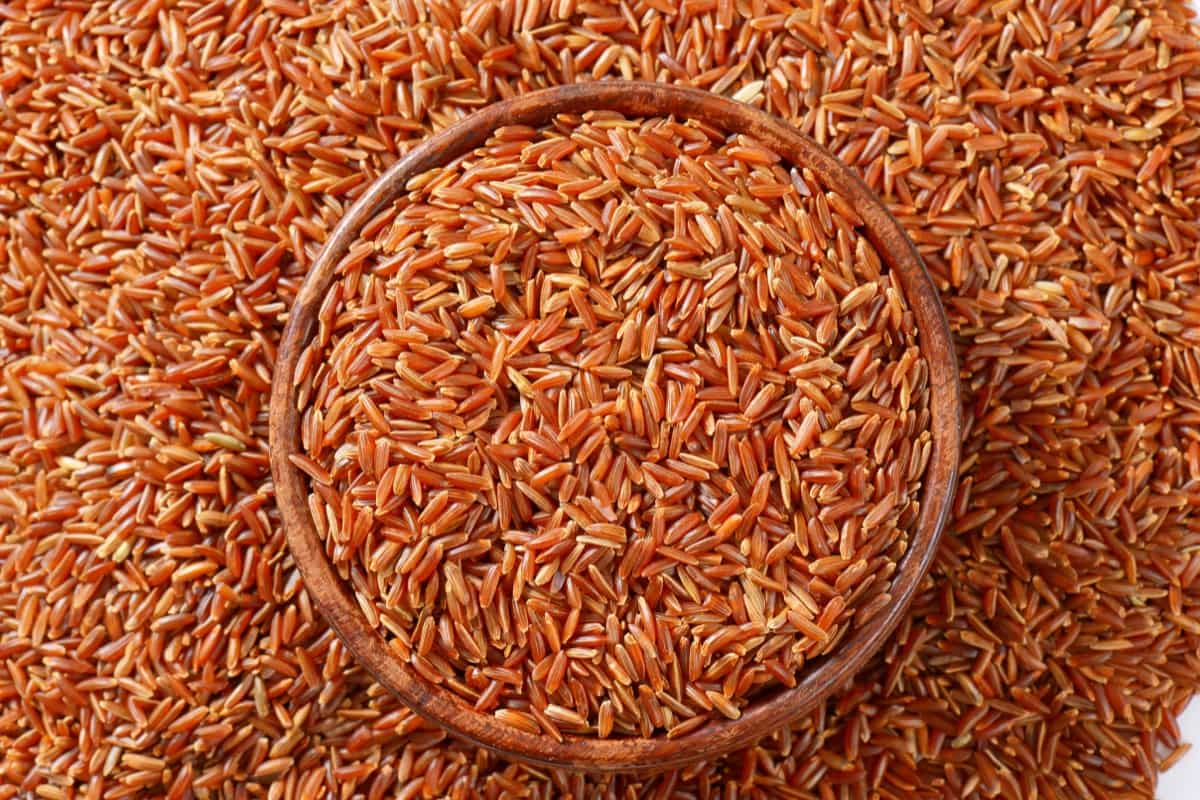
What is Red Rice Farming?
Red rice farming is cultivating a unique variety of red rice. Red rice gets its name from its reddish-brown bran layer, which contains natural pigments like anthocyanins. These pigments give the rice a distinctive color and provide health benefits due to their antioxidant properties. Red rice is grown in flooded fields, just like traditional rice, but requires specific soil conditions and water management techniques.
The cultivation process involves preparing the field, sowing the seeds, and providing appropriate water levels throughout the growth cycle. Red rice farming promotes sustainable agriculture as it requires fewer chemical inputs and is often grown using organic methods. It offers consumers a nutritious and visually appealing alternative to regular white rice.
Red Rice Farming Techniques
Red rice farming techniques encompass a range of scientifically-backed practices that optimize the cultivation of red rice varieties. These techniques involve pre- and post-planting approaches to maximize yield and minimize potential issues. Before planting, farmers often prepare the soil by ensuring it is well-drained and rich in organic matter. They may also employ crop rotation methods to prevent diseases and pests. Appropriation spacing and planting density are crucial factors in promoting healthy growth.
Furthermore, applying balanced fertilizers and integrated pest management techniques can help maintain crop health and minimize environmental impact. Post-planting techniques include timely irrigation and weed control. Harvesting at the right maturity stage and proper storage techniques are also vital for preserving the quality of red rice.
In case you missed it: Management of Grassy Weeds in Direct-Seeded Rice Fields
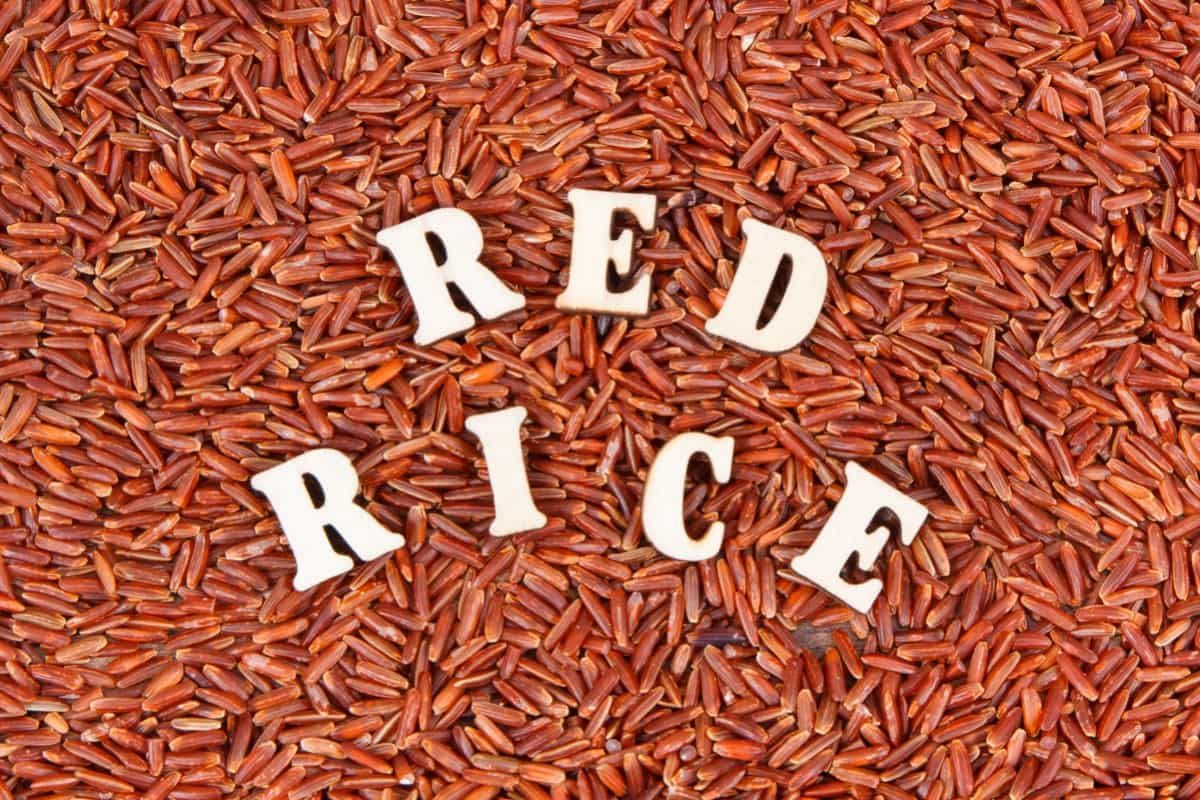
Organic Red Rice Cultivation
- Organic red rice cultivation practices involve methods that prioritize sustainability and environmental friendliness. By following these practices, farmers can grow red rice without synthetic chemicals, ensuring the final product is free from harmful residues.
- To begin with, organic farmers rely on natural fertilizers such as compost and manure, which provide essential nutrients to the soil and promote healthy plant growth. They also employ crop rotation techniques to prevent the buildup of pests and diseases. By rotating crops, the risk of infestation decreases, and the soil remains fertile over the long term.
- Weed control in organic red rice cultivation is achieved through manual methods like hand weeding or mechanical tools. This approach helps minimize weed competition, allowing the red rice plants to thrive and maximize their yield potential.
- Water management plays a crucial role in organic red rice cultivation. Farmers practice efficient irrigation techniques, such as drip or water-conserving, to reduce water usage. This conserves water and helps prevent waterlogging and the spread of waterborne diseases.
- Regarding pest and disease management, organic farmers use natural methods such as biological control, where beneficial insects or organisms are introduced to control pests. They also employ trap crops, which lure pests away from the red rice plants, thereby reducing damage.
- Harvesting organic red rice is typically done manually, ensuring that only mature grains are collected. After harvesting, the grains are processed without chemical additives or preservatives, maintaining their organic integrity.
Red Rice Varieties and Seeds
Red rice is known for its reddish color, which comes from pigments called anthocyanins. These pigments are also found in other red fruits and vegetables and have been linked to various health benefits. Red rice is often healthier than white rice because it retains more of its bran layer, which contains important nutrients and fiber. Several red rice varieties are available, each with its unique characteristics. One popular variety is Bhutanese red rice, which has a nutty flavor, slightly sticky texture when cooked.
Another variety is Thai red rice, which has a mild and nutty taste. Red Cargo rice, commonly grown in Southeast Asia, has a rich, earthy flavor. Red rice seeds are small and have a reddish-brown color. They are typically sown in well-drained soil and require plenty of sunlight. These seeds have a relatively long growing season, usually around 100 to 120 days. Red rice plants are known for their resilience and can tolerate different soil conditions, although they prefer fertile soil with a pH level between 6 and 7.
In case you missed it: Paddy Cultivation through Direct Seeding Technology: A Profitable Rice Production Method
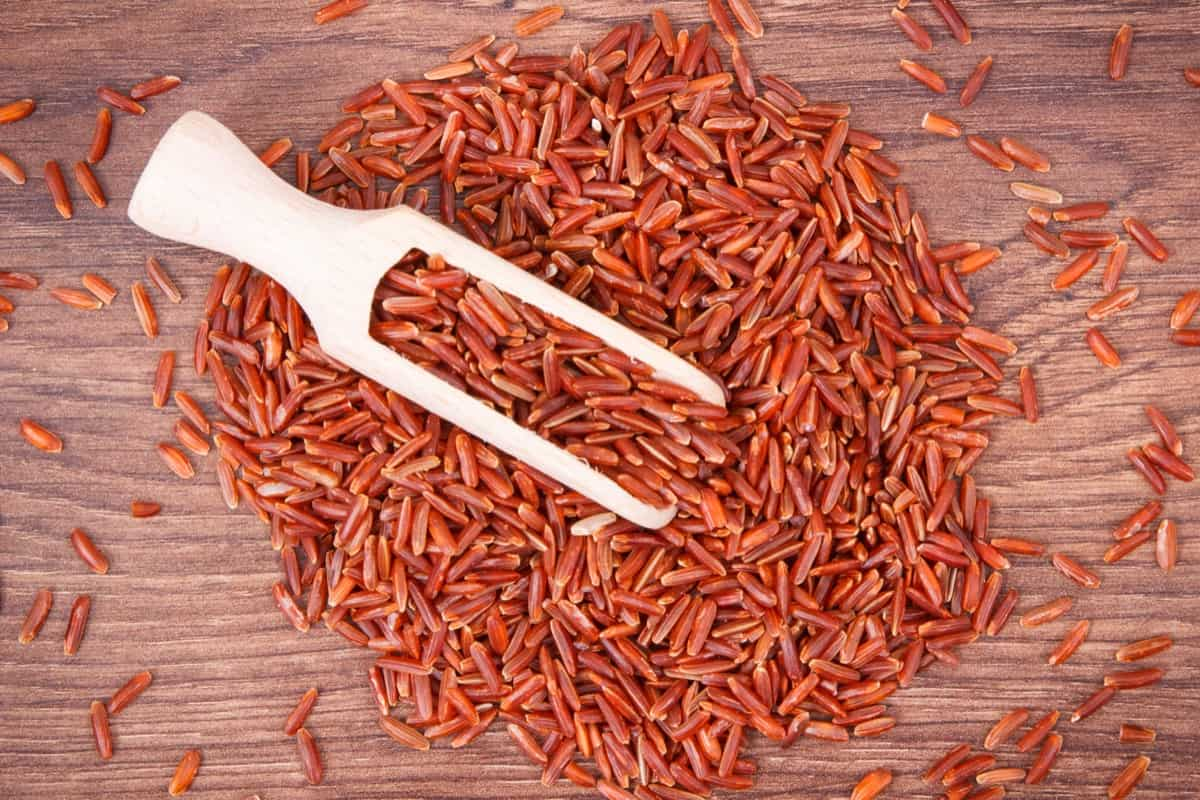
Red Rice Farming Practices
- Seed Selection: Choose high-quality red rice seeds from reliable sources. Select disease-resistant seeds suitable for your specific climate and soil conditions.
- Land Preparation: Prepare the land by plowing and leveling it thoroughly. Red rice thrives in well-drained soil, so ensure proper drainage to prevent waterlogging.
- Sowing: Sow the red rice seeds in rows with appropriate spacing. The recommended spacing is typically 20-25 cm between rows and 10-15 cm between plants.
- Irrigation: Red rice requires sufficient water for optimal growth. Maintain consistent soil moisture during the growing period, especially during the early stages. Avoid overwatering to prevent fungal diseases.
- Weed Control: Regularly remove weeds to minimize competition for nutrients and space. Hand weeding or using appropriate herbicides can effectively control weeds.
- Fertilization: Apply organic or balanced chemical fertilizers to provide essential nutrients to the plants. Red rice generally requires nitrogen, phosphorus, and potassium for healthy growth.
- Pest and Disease Management: Monitor for common pests like rice stem borers, leaf folders and diseases like blast and bacterial leaf blight. Take preventive measures and apply suitable pesticides when necessary.
- Harvesting: Harvest red rice when the grains are fully matured and have turned reddish. Cut the panicles, thresh them, and separate the grains from the chaff.
Red Rice Market Trends
The red rice market is witnessing significant growth globally, driven by the increasing demand for healthier and more nutritious food options. Red rice is cultivated in several regions worldwide, with major growing areas including Thailand, China, Japan, Sri Lanka, and the United States.
In Thailand, red rice is a staple food and holds cultural significance. It is primarily grown in the northeastern and northern regions of the country. China is also a prominent producer of red rice, particularly in the southern provinces of Guangdong, Guangxi, and Yunnan. Japan is known for its heirloom red rice varieties, with production concentrated in the Akita, Yamagata, and Niigata prefectures.
In India, red rice cultivation is prevalent in states such as West Bengal, Kerala, Karnataka, and Himachal Pradesh. West Bengal is a major producer, with districts like Birbhum, Bankura, and Murshidabad significant growing areas. Kerala, particularly the districts of Wayanad and Malappuram, is known for its indigenous red rice varieties.
Karnataka and Himachal Pradesh also contribute to the red rice production in the country. The growing popularity of red rice can be attributed to its superior nutritional value, unique flavor, and potential health benefits. As consumer awareness about healthy food choices rises, the red rice market is expected to expand globally and in India.
Sustainable Red Rice Farming
- Implementing organic farming techniques is a key aspect of sustainable red rice farming. This involves avoiding synthetic pesticides and fertilizers, relying instead on natural alternatives and beneficial organisms to control pests and maintain soil fertility.
- Crop rotation is another sustainable practice utilized in red rice farming. Farmers can reduce the risk of pests and diseases by rotating red rice with other crops, enhancing soil health, and maintaining a balanced nutrient profile.
- Water management is crucial in sustainable red rice farming. Efficient irrigation systems or controlled flooding, help conserve water and reduce wastage.
- Conservation of biodiversity is also prioritized in sustainable farming practices. Preserving natural habitats, promoting beneficial insects, and using heirloom red rice varieties contribute to the overall health and resilience of the ecosystem.
In case you missed it: Rice Cultivation in Greenhouse: A Profitable Business Plan for Sustainable Farming
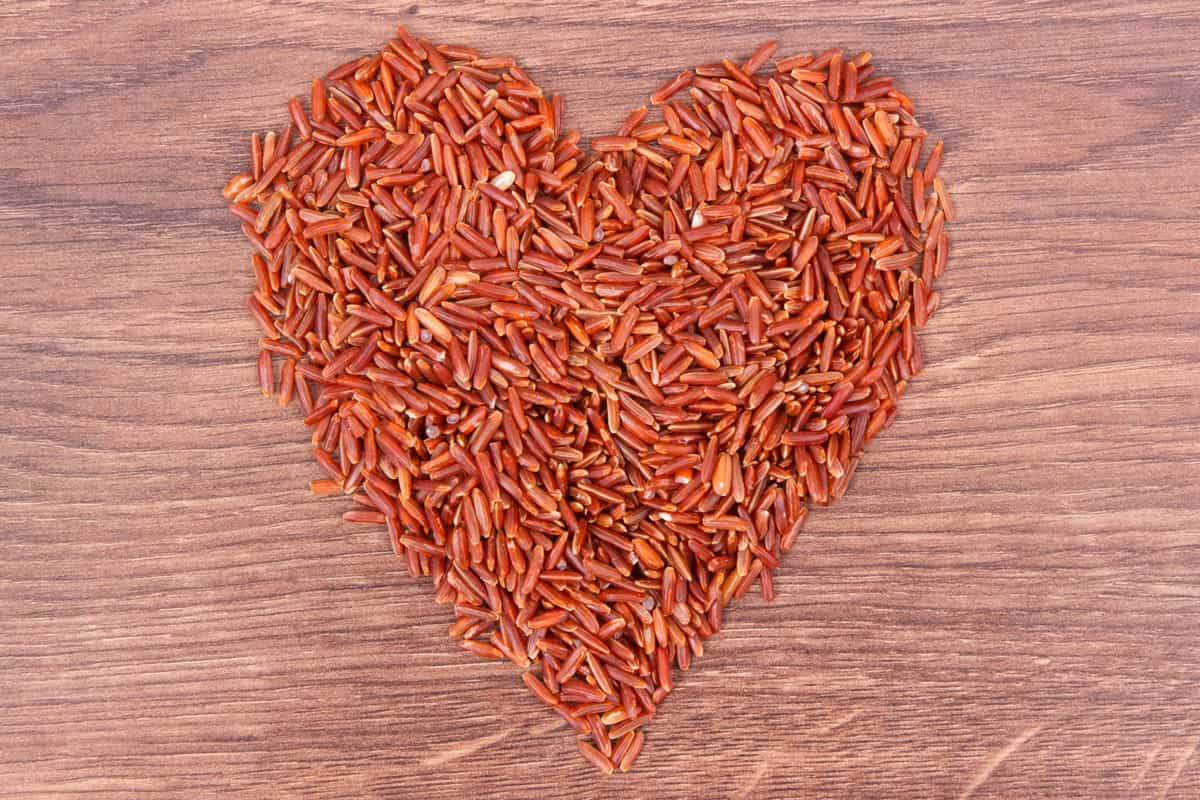
Red Rice Nutritional Value
Red rice is a nutritious grain with health benefits due to its high nutritional profile. It is rich with fiber, vitamins, minerals, and antioxidant properties. Red rice aids digestion, promotes satiety, and supports healthy bowel movements. It also contains B vitamins, such as thiamin, niacin, and vitamin B6, which are crucial for energy production and nervous system functioning.
Additionally, red rice contains iron, magnesium, and zinc, which are helpful for red blood cell production, bone health, and blood pressure regulation. Anthocyanins, one of red rice’s antioxidant components, shield cells from free radical damage, lowering the risk of developing chronic diseases.
Red Rice Cooking Recipes
Three delicious red rice cooking recipes are provided: Red Rice Salad with Roasted Vegetables, Red Rice Stir-Fry with Tofu and Vegetables, and Red Rice Pudding with Cinnamon and Raisins. The salad combines cooked red rice with roasted vegetables, drizzled with lemon juice and fresh herbs. The stir-fry is made by heating sesame oil in a large skillet or wok, adding minced garlic and red pepper flakes, and cooking the tofu and vegetables.
The stir-fry is then served hot, garnished with chopped green onions. The red rice pudding combines cooked red rice, milk, sweetener, cinnamon powder, raisins, and vanilla extract. The pudding is served warm or at room temperature as a nutritious side dish. These recipes showcase the versatility of red rice and provide delicious ways to incorporate it into meals.
Red Rice Health Benefits
- Rich in Antioxidants: Red rice is packed with antioxidants, including anthocyanins, which help combat oxidative stress and reduce the risk of chronic diseases.
- Supports Heart Health: The fiber, magnesium, and antioxidants present in red rice contribute to heart health by lowering cholesterol levels, reducing blood pressure, and promoting healthy blood circulation.
- Diabetes Management: Red rice has a lower glycemic index than white rice, making it a better option for individuals with diabetes. It helps in regulate blood sugar levels and improves insulin sensitivity.
- Weight Management: The high fiber content in red rice promotes satiety, making you feel fuller for longer. This can aid in weight management and prevent overeating.
- Digestive Health: The fiber in red rice supports digestive system by promoting bowel movements and preventing constipation.
- Boosts Immunity: Red rice contains essential vitamins and minerals that strengthen the immune system, helping the body fight infections and diseases.
- Anti-Inflammatory Properties: The antioxidants in red rice possess anti-inflammatory properties, reduce inflammation in the body and alleviate symptoms of inflammatory conditions.
- Provides Energy: Red rice is a complex carbohydrate that provides sustained energy release, making it an excellent choice for athletes and those needing lasting energy throughout the day.
- Nutrient-Rich: Red rice is a good source of various nutrients, including iron, zinc, manganese, and B vitamins, which needed for overall health and well-being.
- Gluten-Free Option: Red rice is naturally gluten-free, making it suitable for individuals with gluten intolerance or celiac disease.
In case you missed it: Stem Borer Management in Paddy Farming: Symptoms, Rice Damages, Natural, Organic, Chemical, and Biological Control
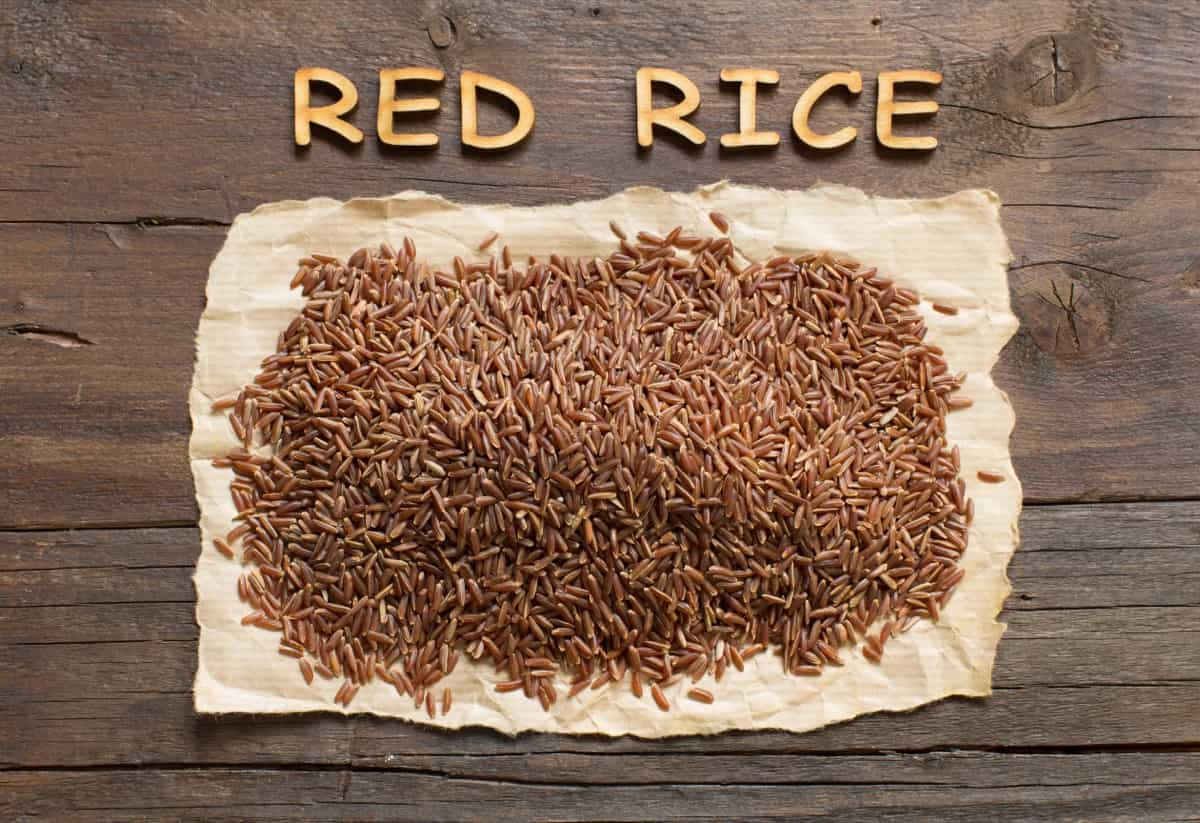
Red Rice Pest Management
Red rice cultivation faces pests like red rice stem borer and red rice weevil, which can cause damage and loss. Effective pest management strategies include cultural practices, crop rotation, clean field preparation, biological control methods, and insecticides. These pests can cause lodging, reduced grain quality, and damage to stored red rice. However, the application should be judicious and environmentally friendly to minimize environmental impact.
Red Rice Disease Control
Red rice is susceptible to diseases like blast, caused by Pyricularia oryzae, which affects growth and yield. Farmers can use cultural practices like crop rotation, removing infected plants, and avoiding waterlogged conditions to control blasts. Sheath blight, caused by Rhizoctonia solani, causes lesions on leaf sheaths and can lead to lodging. Proper field drainage, balanced fertilizer application, and planting disease-resistant varieties can help control these diseases.
Red Rice Harvesting Methods
Harvesting red rice involves specific methods to ensure a successful and efficient harvest. When the red rice plants have matured, and the grains have reached their optimum stage of ripeness, the harvesting process begins. The most common method is manual harvesting, where farmers cut the rice plants using sickles or knives. The harvested plants are bundled together and left to dry in the sun. Once dried, the grains are separated from the plants through threshing, either by hand or machinery.
Red Rice Yield Optimization
Researchers and farmers have been exploring techniques to enhance productivity and improve the overall yield of red rice crops. These methods include implementing efficient irrigation practices, adopting suitable nutrient management strategies, and utilizing pest and disease control measures.
Red Rice Farming Challenges
Red rice farming faces several challenges, including lower yields than regular varieties, limited availability of high-quality seeds, and specific growing conditions. Farmers struggle to find reliable sources of seed varieties crucial for sustainable cultivation. Meeting well-drained soil and sunlight requirements can also be challenging, especially in regions with unfavorable soil or limited irrigation access.
In case you missed it: Rice Blast Disease in Paddy Crop: Symptoms, Causes, Control Management, and Treatment
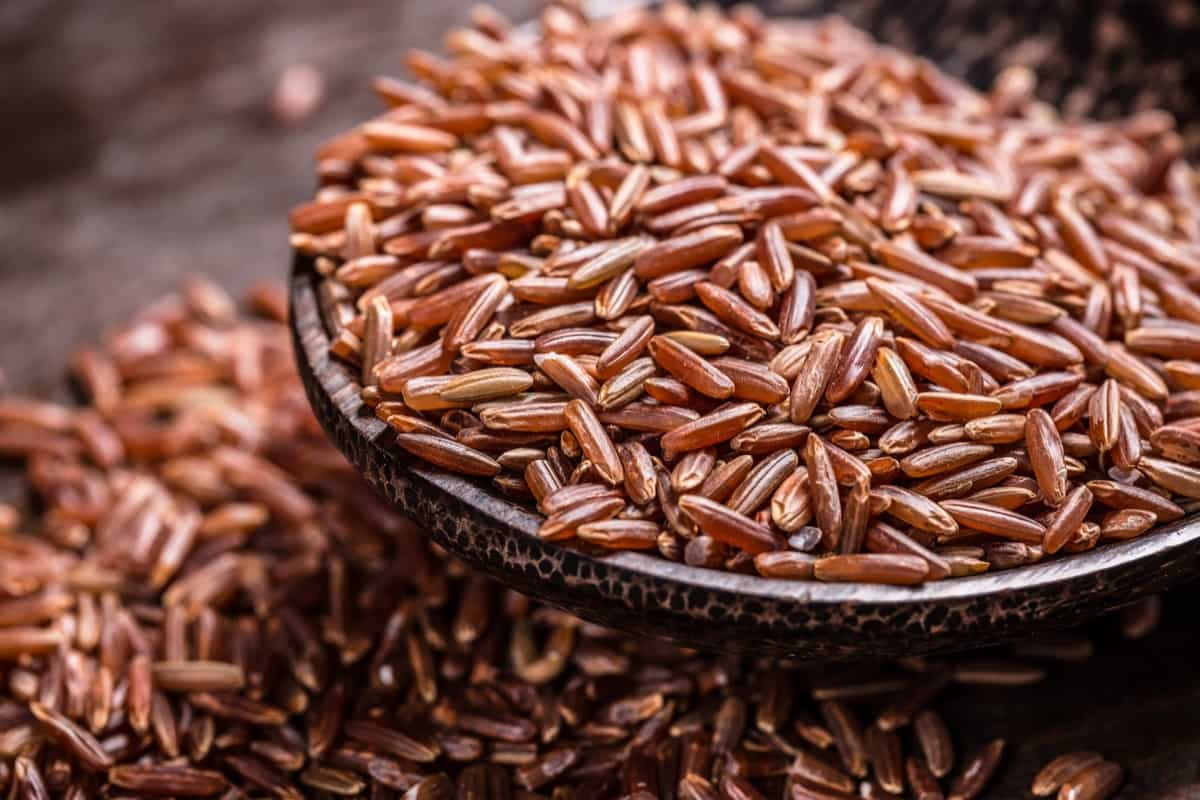
Pest and disease management is also a concern, as certain pests and diseases can severely impact red rice crops. Effective pest control measures and disease management strategies are essential for a successful harvest.
Conclusion
Successful red rice farming requires addressing challenges such as lower yields, limited seed availability, specific growing conditions, and effective pest and disease management. Farmers can promote sustainable and profitable red rice cultivation from seed to harvest by implementing appropriate practices and strategies.
- Types of Pesticides Used in Agriculture: A Beginner’s Guide
- Economical Aquaculture: A Guide to Low-Budget Fish Farming
- 15 Common Planting Errors That Can Doom Your Fruit Trees
- How to Make Houseplants Bushy: Effective Tips and Ideas
- Innovative Strategies for Boosting Coconut Pollination and Yield
- Pollination Strategies for Maximum Pumpkin Yield
- The Complete Guide to Chicken Fattening: Strategies for Maximum Growth
- Natural Solutions for Tulip Problems: 100% Effective Remedies for Leaf and Bulb-Related Issues
- Revolutionizing Citrus Preservation: Towards a Healthier, Greener Future
- Natural Solutions for Peony Leaf and Flower Problems: 100% Effective Remedies
- Maximizing Profits with Avocado Contract Farming in India: A Comprehensive Guide
- Natural Solutions for Hydrangea Problems: 100% Effective Remedies for Leaf and Flowers
- The Ultimate Guide to Choosing the Perfect Foliage Friend: Bringing Life Indoors
- From Sunlight to Sustainability: 15 Ways to Use Solar Technology in Agriculture
- The Ultimate Guide to Dong Tao Chicken: Exploring from History to Raising
- The Eco-Friendly Makeover: How to Convert Your Unused Swimming Pool into a Fish Pond
- Mastering the Art of Delaware Chicken Farming: Essentials for Healthy Backyard Flocks
- 20 Best Homemade Fertilizers for Money Plant: DIY Recipes and Application Methods
- How to Craft a Comprehensive Free-Range Chicken Farming Business Plan
- Brighten Your Flock: Raising Easter Egger Chickens for Beauty and Bounty
- How to Optimize Your Poultry Egg Farm Business Plan with These Strategies
- Subsidy for Spirulina Cultivation: How Indian Government Schemes Encouraging Spirulina Farmers
- Ultimate Guide to Raising Dominique Chickens: Breeding, Feeding, Egg-Production, and Care
- Mastering the Art of Raising Jersey Giant Chickens: Care, Feeding, and More
- Ultimate Guide to Raising Legbar Chickens: Breeding, Farming Practices, Diet, Egg-Production
- How to Raise Welsummer Chickens: A Comprehensive Guide for Beginners
- How to Protect Indoor Plants in Winter: A Comprehensive Guide
- Ultimate Guide to Grow Bag Gardening: Tips, Tricks, and Planting Ideas for Urban Gardeners
- Guide to Lotus Cultivation: How to Propagate, Plant, Grow, Care, Cost, and Profit
- Agriculture Drone Subsidy Scheme: Government Kisan Subsidy, License, and How to Apply Online
- Ultimate Guide to Raising Araucana Chickens: Breed Profile, Farming Economics, Diet, and Care
- Bringing Hydroponics to Classroom: Importance, Benefits of Learning for School Students
- Ultimate Guide to Raising Polish Chickens: Breed Profile, Farming Economics, Diet, and Care
- Ultimate Guide to Raising Australorp Chickens: Profile, Farming Economics, Egg Production, Diet, and Care
- Silkie Chicken Farming: Raising Practices, Varieties, Egg Production, Diet, and Care
- Sussex Chicken Farming: Raising Practices, Varieties, Egg Production, Diet and Care